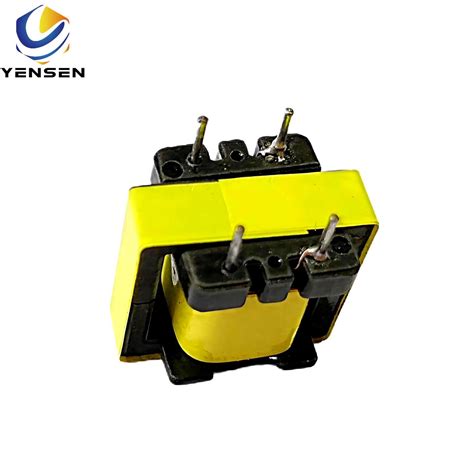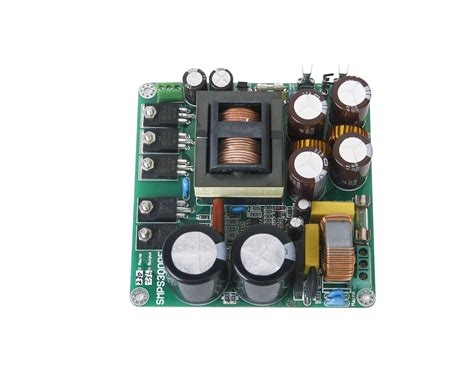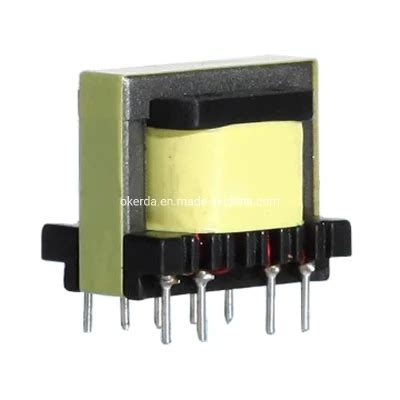What is Switching Frequency?
Switching frequency refers to the number of times per second that the power switch in an SMPS turns on and off. It is typically measured in Hertz (Hz) or kilohertz (kHz). The switching frequency determines how quickly the SMPS can respond to changes in load current and input voltage, as well as how much ripple voltage will be present on the output.
Factors Influencing Switching Frequency Selection
When choosing a switching frequency for your SMPS design, there are several key factors to consider:
1. Efficiency
The switching frequency has a direct impact on the efficiency of the SMPS. Higher switching frequencies generally result in smaller inductors and capacitors, which can reduce conduction losses. However, higher frequencies also lead to increased switching losses in the power switches and rectifiers. There is typically an optimal frequency that balances these losses to achieve maximum efficiency.
2. Size and Weight
Higher switching frequencies allow for smaller inductors and capacitors, which can significantly reduce the overall size and weight of the SMPS. This is particularly important in applications where space is limited, such as in portable devices or aerospace systems.
3. Cost
The choice of switching frequency can also impact the cost of the SMPS. Higher frequencies require faster, more expensive power switches and rectifiers, as well as more complex control circuitry. Lower frequencies may allow for cheaper components, but at the expense of larger inductors and capacitors.
4. Electromagnetic Interference (EMI)
The switching action of an SMPS generates high-frequency noise that can cause electromagnetic interference (EMI) with nearby electronic devices. Higher switching frequencies can exacerbate this problem, requiring more extensive EMI filtering and shielding. Choosing a lower switching frequency can help minimize EMI issues.
5. Control Complexity
Higher switching frequencies can make it more challenging to design the control loop for the SMPS. Faster control loops are required to maintain stability and respond to load and input changes quickly. This may require more advanced control techniques, such as current-mode control or digital control.

Common Switching Frequency Ranges
SMPSs are used in a wide range of applications, from low-power consumer electronics to high-power industrial systems. The choice of switching frequency depends on the specific requirements of each application. Here are some common switching frequency ranges for different types of SMPSs:
| SMPS Type | Switching Frequency Range |
|---|---|
| Offline AC-DC converters | 50 kHz – 1 MHz |
| DC-DC converters | 100 kHz – 5 MHz |
| Resonant converters | 50 kHz – 10 MHz |
| High-voltage converters | 10 kHz – 200 kHz |
Note that these are general ranges, and specific designs may use frequencies outside these ranges depending on the application requirements.

Selecting the Optimal Switching Frequency
To select the optimal switching frequency for your SMPS design, follow these steps:
-
Define the application requirements: Start by clearly defining the requirements for your SMPS, including input voltage range, output voltage and current, efficiency targets, size constraints, and EMI limits.
-
Consider the trade-offs: Evaluate the trade-offs between efficiency, size, cost, EMI, and control complexity for different switching frequencies. Use the factors discussed earlier to guide your decision-making process.
-
Simulate and prototype: Use simulation tools to model the performance of your SMPS at different switching frequencies. Build prototypes to validate the simulations and measure actual efficiency, EMI, and transient response.
-
Optimize the design: Based on the simulation and prototype results, optimize the design by fine-tuning the switching frequency and other circuit parameters. Consider using advanced techniques such as synchronous rectification, soft switching, or interleaving to improve performance.
-
Test and validate: Thoroughly test the final design to ensure it meets all the application requirements and regulatory standards. Measure efficiency, EMI, thermal performance, and transient response under various operating conditions.
By following these steps and carefully considering the trade-offs involved, you can select the optimal switching frequency for your SMPS design that balances efficiency, size, cost, and performance.

Advanced Techniques for Improving SMPS Performance
In addition to selecting the right switching frequency, there are several advanced techniques that can be used to improve the performance of an SMPS:
1. Synchronous Rectification
Synchronous rectification replaces the traditional diode rectifiers with MOSFETs that are actively controlled to minimize conduction losses. This technique can significantly improve efficiency, especially at low output voltages and high currents.
2. Soft Switching
Soft switching techniques, such as zero-voltage switching (ZVS) and zero-current switching (ZCS), can reduce switching losses by ensuring that the power switches turn on and off when the voltage or current across them is zero. This allows for higher switching frequencies and improved efficiency.
3. Interleaving
Interleaving involves paralleling multiple SMPS stages and phase-shifting their switching signals to reduce output ripple and improve transient response. This technique can also help reduce the size of the output capacitors and improve overall power density.
4. Digital Control
Digital control techniques using microcontrollers or digital signal processors (DSPs) can provide more precise and flexible control of the SMPS. This can enable advanced features such as adaptive voltage positioning, load sharing, and real-time optimization of the switching frequency and other parameters.
Frequently Asked Questions (FAQ)
1. What is the relationship between switching frequency and inductor size?
The size of the inductor in an SMPS is inversely proportional to the switching frequency. As the frequency increases, the required inductance decreases, allowing for smaller inductors. However, higher frequencies also result in increased core losses and winding losses in the inductor, so there is a practical limit to how high the frequency can be pushed.
2. How does switching frequency affect the output ripple voltage?
The output ripple voltage in an SMPS is inversely proportional to the switching frequency. Higher frequencies result in smaller ripple voltages, as the output capacitor has less time to discharge between switching cycles. However, higher frequencies also increase the RMS current in the capacitor, which can lead to higher losses and shorter capacitor lifetimes.
3. What are the main sources of EMI in an SMPS?
The main sources of EMI in an SMPS are the high-frequency switching of the power devices and the ringing and oscillations that can occur in the circuit inductances and capacitances. These fast-changing signals can couple noise into nearby circuits through electric and magnetic fields, as well as through conducted paths such as power lines and ground planes.
4. How can I reduce EMI in my SMPS design?
To reduce EMI in an SMPS design, you can use several techniques:
- Choose a lower switching frequency to minimize the high-frequency noise generated by the power switches.
- Use proper layout techniques to minimize loop areas and coupling between noisy and sensitive circuits.
- Add EMI filters at the input and output of the SMPS to attenuate high-frequency noise.
- Use shielding techniques such as grounded metal enclosures to contain EMI.
- Follow good grounding and decoupling practices to minimize conducted EMI.
5. What are the benefits of using a higher switching frequency in an SMPS?
Using a higher switching frequency in an SMPS has several benefits:
- Smaller passive components (inductors and capacitors) can be used, reducing the overall size and weight of the SMPS.
- Higher power density can be achieved, as more power can be delivered in a smaller volume.
- Faster transient response can be obtained, as the SMPS can respond more quickly to changes in load current and input voltage.
- Higher efficiency can be achieved, as smaller passive components have lower conduction losses and higher quality factors.
However, these benefits come at the cost of increased switching losses, EMI, and control complexity, so the switching frequency must be carefully selected based on the specific application requirements.
Conclusion
Selecting the right switching frequency is a critical step in designing an efficient, compact, and cost-effective SMPS. By understanding the factors that influence the choice of switching frequency and following a systematic design process, you can optimize your SMPS for the specific requirements of your application. Advanced techniques such as synchronous rectification, soft switching, interleaving, and digital control can further improve the performance of your SMPS, but they also add complexity and cost. Ultimately, the best approach is to carefully balance the trade-offs and use simulation and experimentation to find the optimal design for your needs. With the right switching frequency and circuit topology, you can create an SMPS that delivers reliable, efficient power in a compact and cost-effective package.

No responses yet